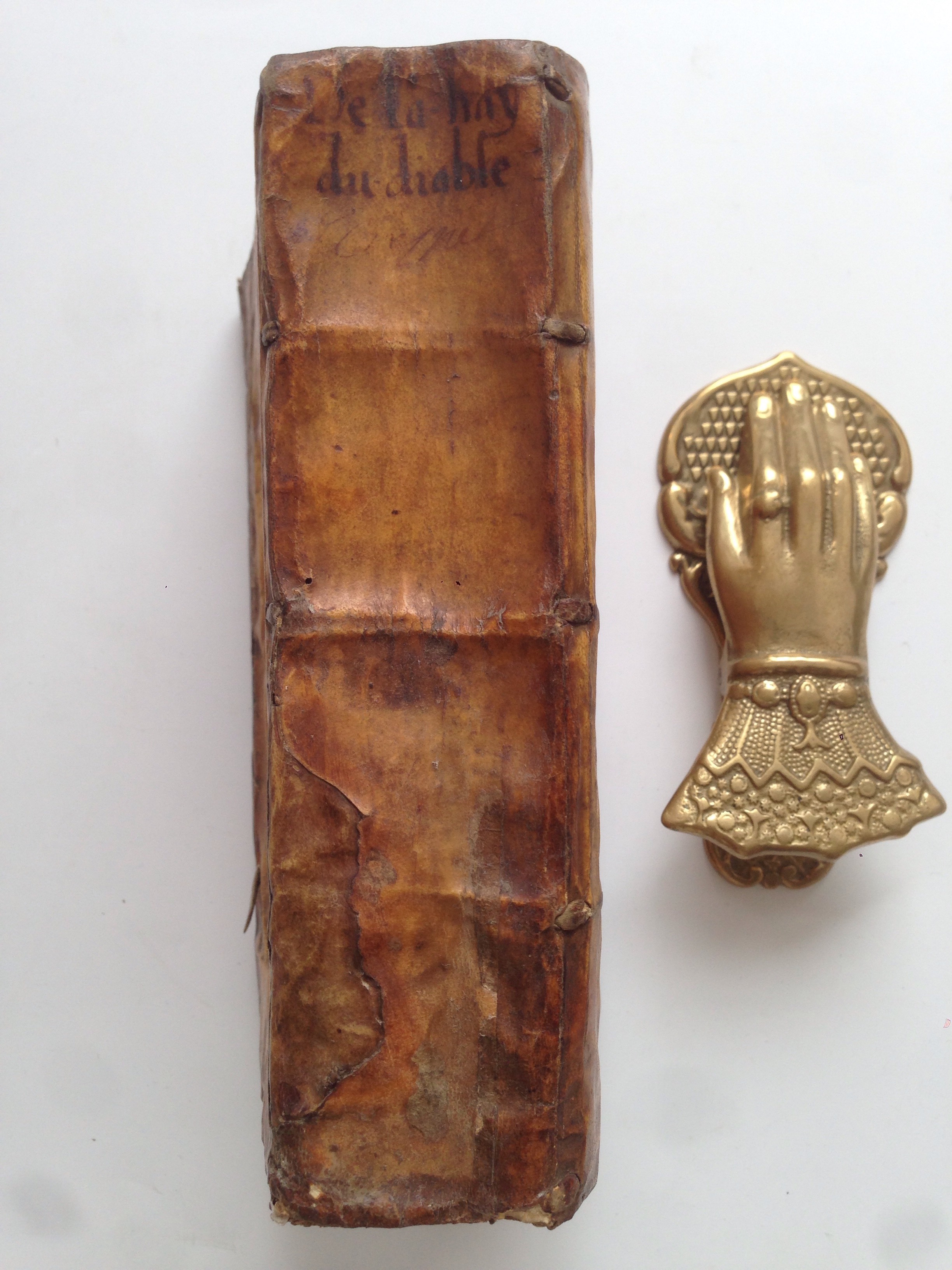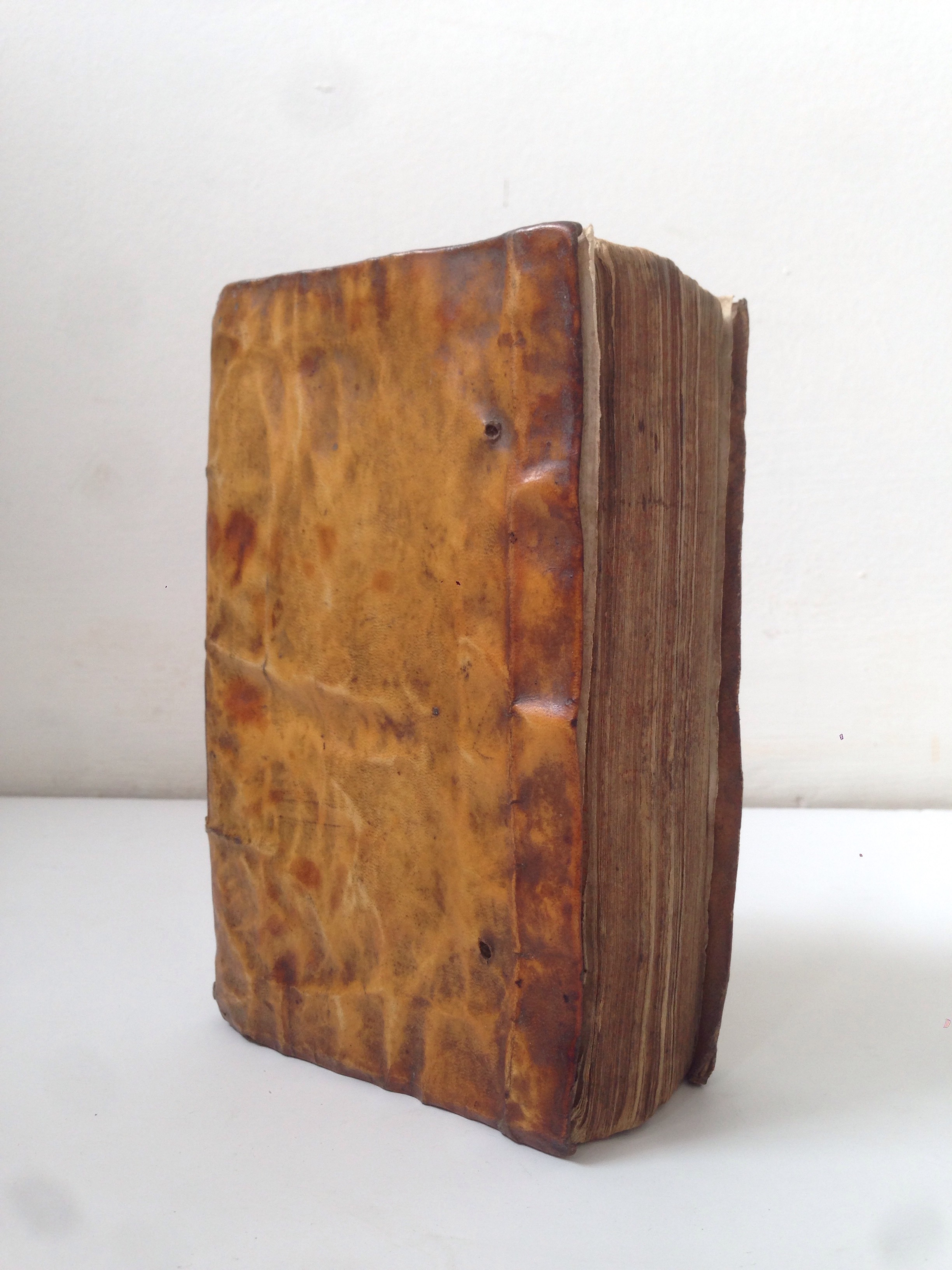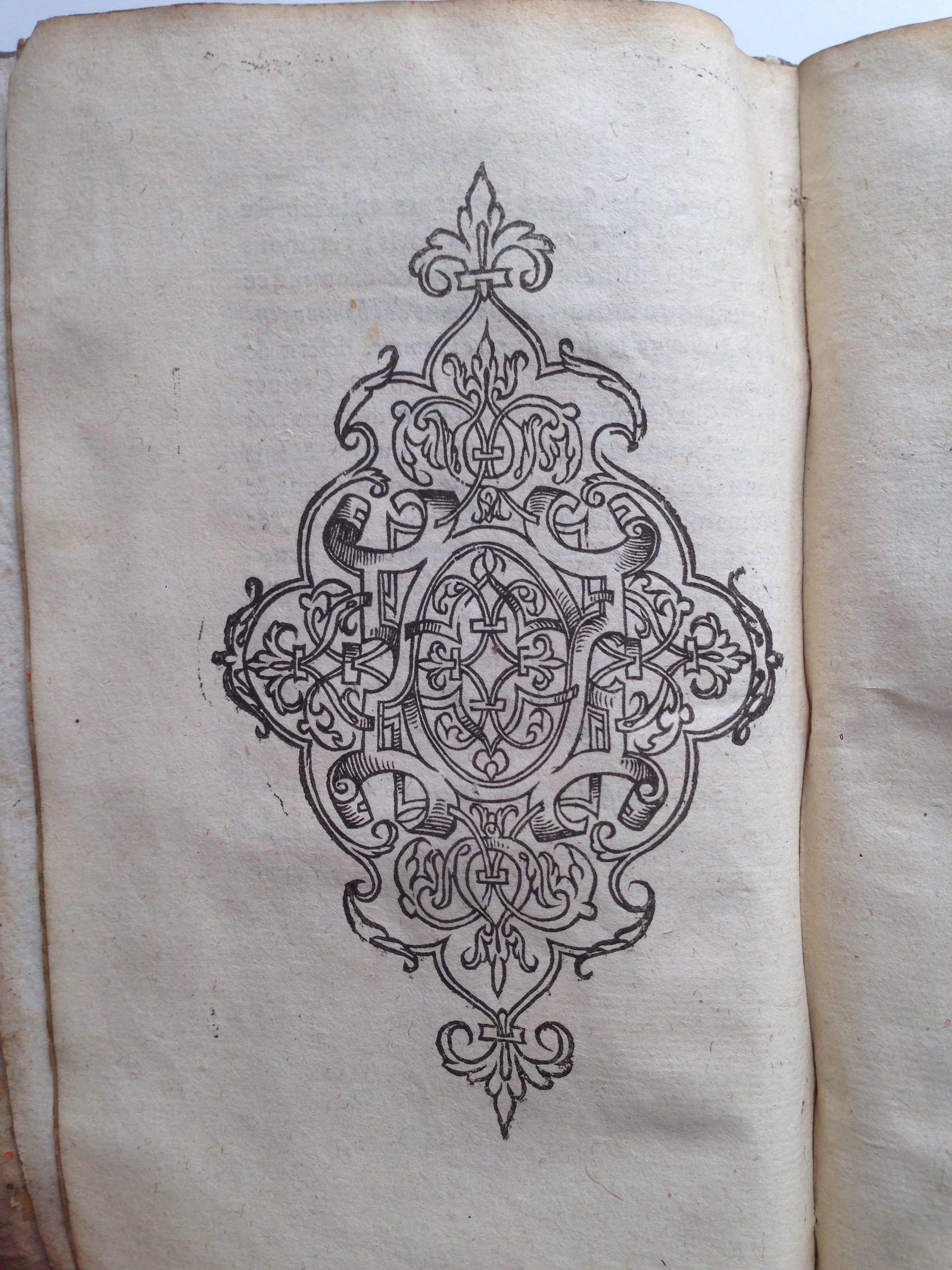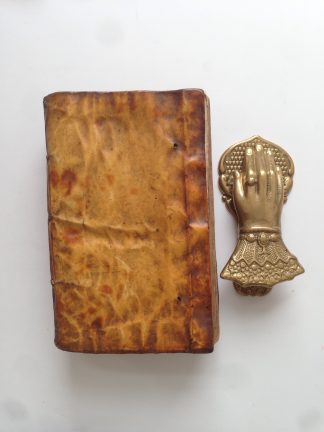CRESPET, Pierre
Devx livres de la hayne de Sathan et malins esprits contre l'homme… pour nuyre à l'homme par charmes, obsessions, magie, sorcellerie, illusions, phantosmes… en l’Eglise..
Paris, Chez Guillaume de La Nouë, 1590£9,500.00
FIRST EDITION. 8vo. ff. [xxvi], 428, [xxii]. ã , , , õ², a-z , 2A-3K , 3L². Roman letter, some Italic. Grotesque and floriated woodcut initials and headpieces, full page woodcut arabesque after prefaces, ms. ‘ex-libris G. Romegoux albensy Ao.32” with shelf mark on title in slightly later hand. Title page dusty with light waterstain, small tear to inner blank margin, general age yellowing, a little browning, minor spotting in places, occasional thumb mark spot or stain, last leaf dusty with pale waterstain, occasional mostly marginal waterstain. A good, unsophisticated copy, in contemporary limp vellum, yapp edges, remains of ties, vellum a little darkened and soiled, block starting in places but solid, title manuscript on spine in contemporary hand.
Exceptionally rare first edition of one of the most important and influential treatises on the devil, demons, witchcraft, spells and counter spells of the sixteenth century. The first book is composed of twenty discourses in which the author denounces with great precision (and not without a certain glee) the malefic spells of the devil, various copulations in the form of incubus and succubus, transformations, frightful prodigies, and false miracles – all the misfortunes of this world due to Satan. The second book, composed of six discourses, describes remedies for the devils malefic powers with the help of God and finally the victory of man. Other contemporary authors, like Jean Bodin, insisted on demonstrating the existence of the devil and witches while legitimising the hunting of the latter; others, like John Wier, seemingly more enlightened, tried to fight against this type of superstition. In this context, the work of Pierre Crespet, a Celestin monk, demonstrates a certain originality. His treatise “Two Books of the Hatred of Satan” remains orthodox in the way he perceives witches – his vision is close to that of Jean Bodin – but it is distinguished by the way in which he explains the causes of their appearance, and how their activities are determined on earth. In order to explain how witches have the power they have, such as the ability to cause hailstones and storms, the healing of sick men, to “prophetizer et predire choses à venir” he puts forward the argument that the weakness of man, inherent in his nature, is “une chose toute certaine, que les hommes n’ont pas moyen de leur propre vertu de faire telles choses, mais ils sont aydez par l’art et finesse des demons, qui entretiennent cette vertu de race en race”. He goes further and states that, in these terrestrial acts, the devil is not moved by the ambition of power, but by hatred that he transmits to witches which becomes the the driving force behind all their injurious acts.
Crespet was undoubted heavily influenced by the bitter civil and religious wars that had been raging in France, and was an ardent supporter of the Catholic League. “Crespet was well known in his day as a league writer and Preacher in Paris. He was a fervent advocate of the league, from its first formation in 1576, and was prior of the Celestine abbey in Paris when he published his “Deux livres de la Hayne de Sathan.” For Crespet, all the troubles of his time were to be attributed to the Devil and his supporters, the Protestant heretics” Jonathan L. Pearl. “The Crime of Crimes: Demonology and Politics in France, 1560-1620.” “Also influential beyond the borders of France was .. Pierre Crespet’s tract (two books on the Hatred of Satan and Evil Spirits Against Mankind 1590). Crespet vigorously inveighed against Protestantism – which he considered a satanic heresy – much as Pierre de Lancre would do a few years later.” P. Levack. “The Oxford Handbook of Witchcraft in Early Modern Europe and Colonial America.”
Another aspect of particular interest to Crespet’s work was his detailed discussion of the witches sabbath and its origins. “the demonologist Pierre Crespet located the witches’ dance in a tradition including the bacchanalian revel, early Christian transvestism and the masquerades of the Maschecroutte of contemporary Lyon. The inferior clergy of late medieval France celebrated Christmas and the New Year with burlesques which were readily attributable to God’s ape – singing in dissonances, braying like asses, making indecent grimaces and contortions, repeating prayers in gibberish, censing with puddings or smelly shoes and, above all, mocking the sermon and the mass with fatuous imitations.” Stuart Clark ‘Inversion, Misrule and the Meaning of Witchcraft.”
An exceptionally rare and most interesting work on Witchcraft and demonology.
Caillet, 2689. “Le livre du P. Crespet se rencontre très difficilement ; c’est un des traités de sorcellerie les plus rares qu’on ait publiés au xvi e siècle.” Guaita197. Not in BM STC Fr. C16th or Brunet.In stock








